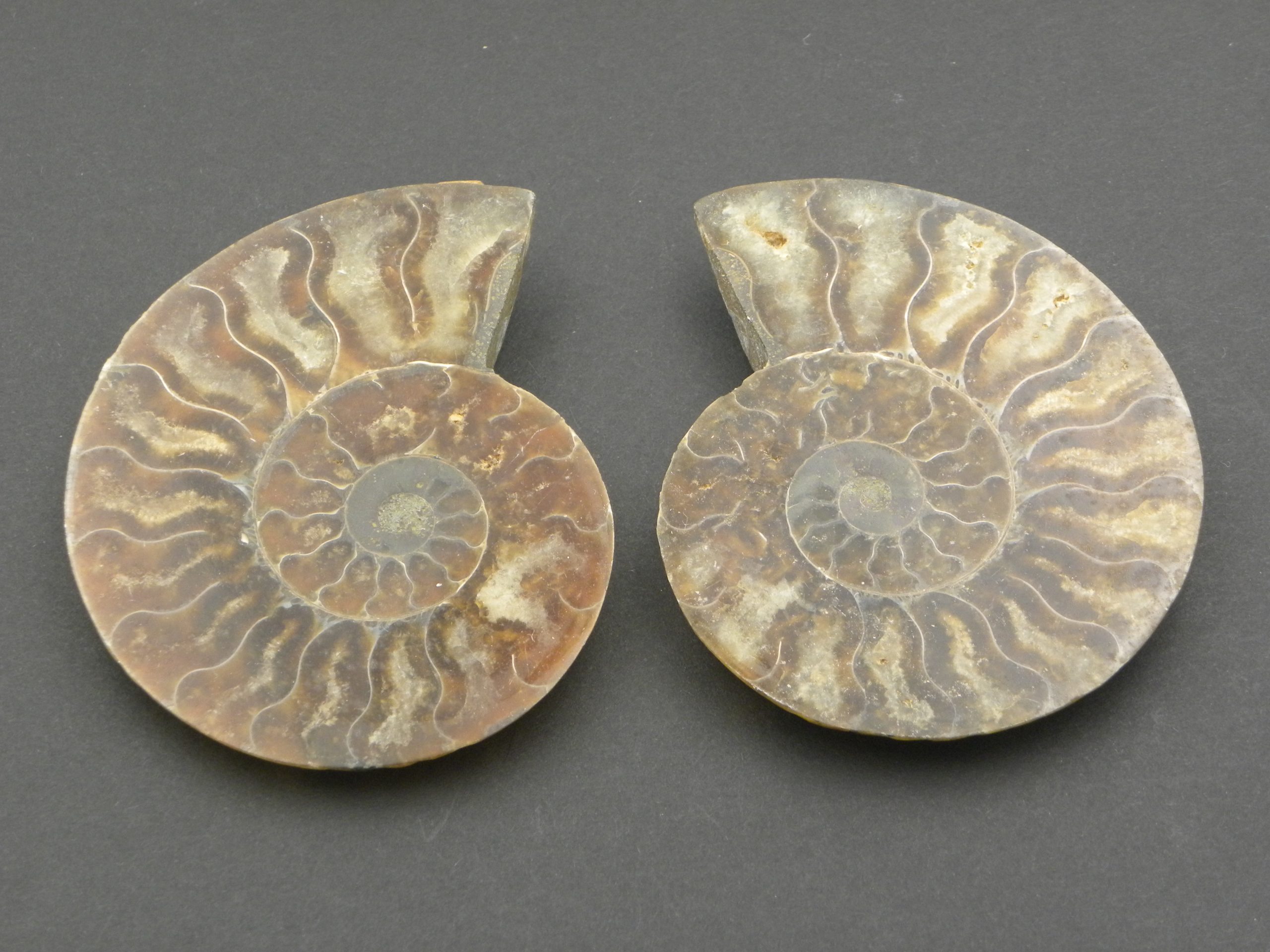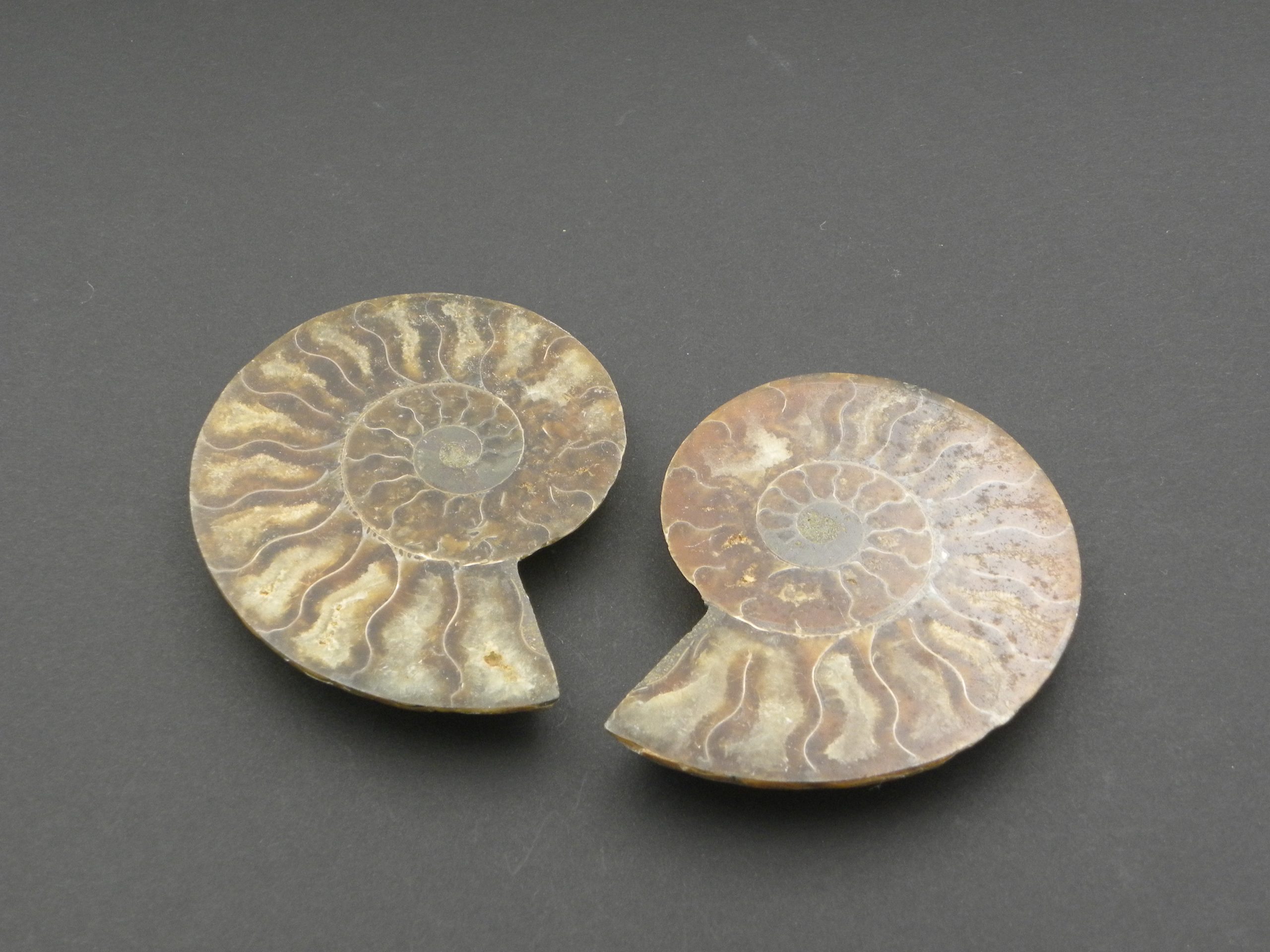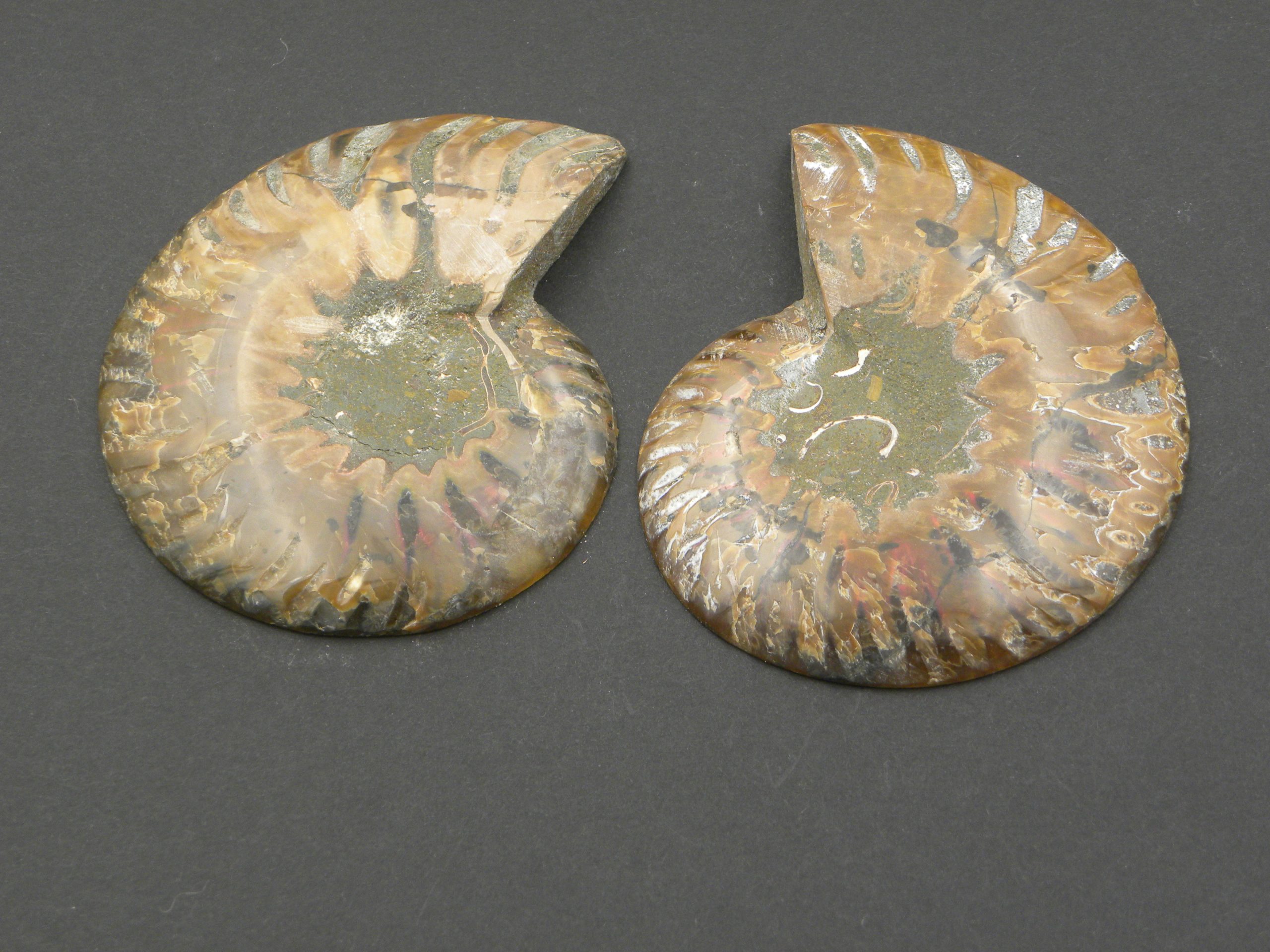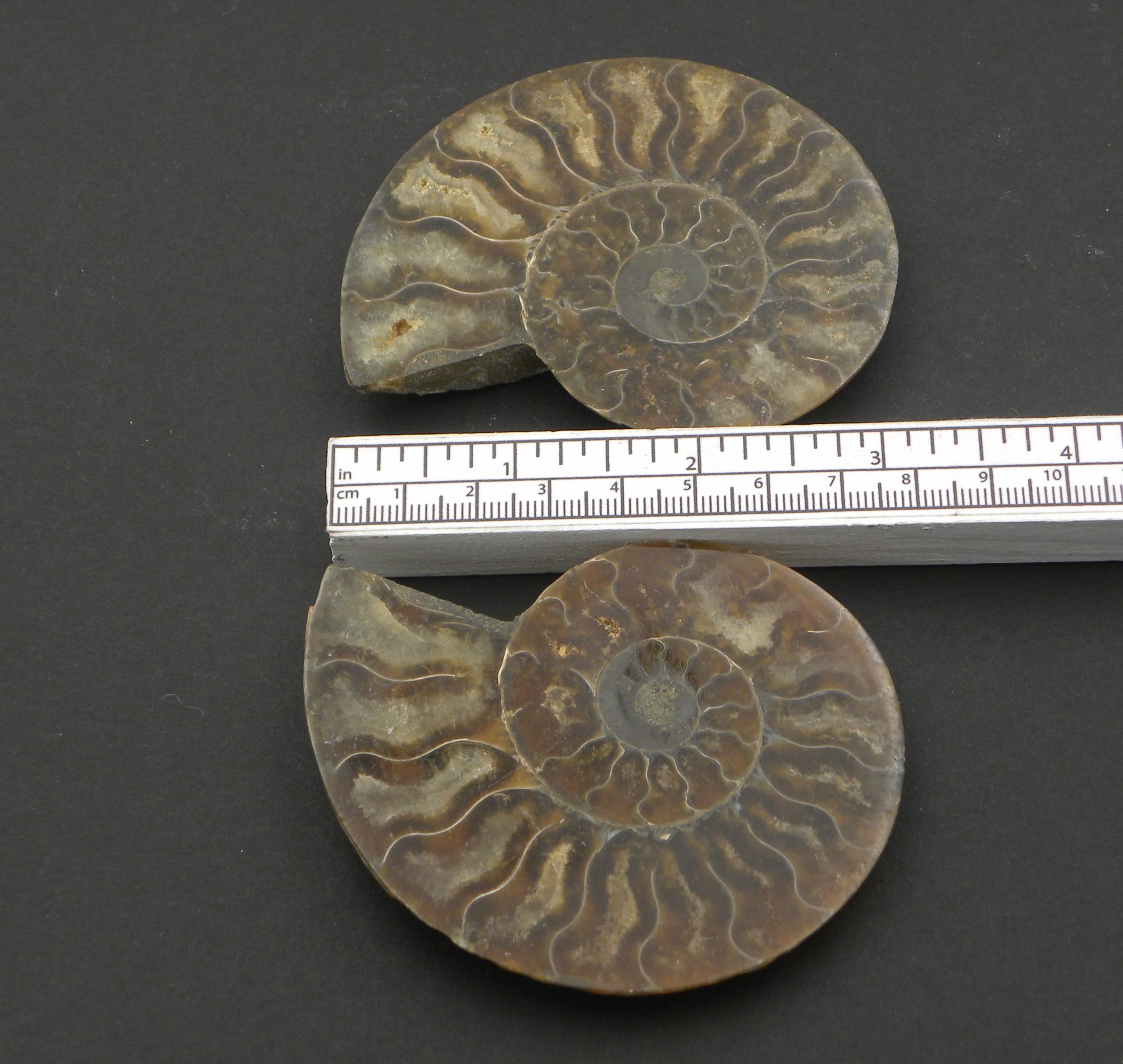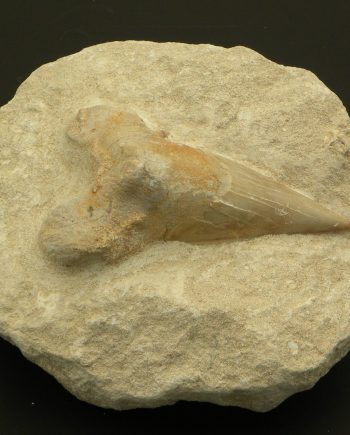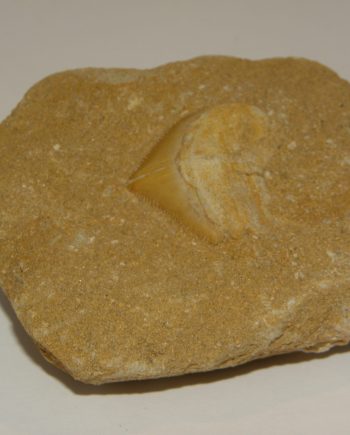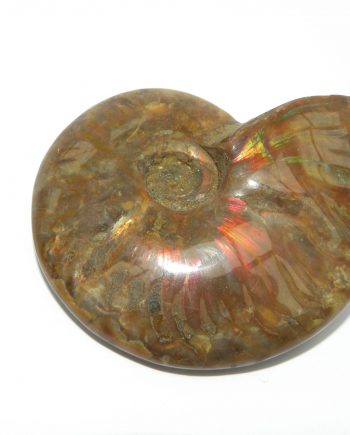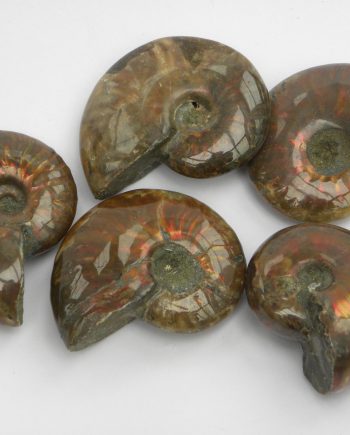Description
Cut Pair Ammonite cleoniceras 7.8cm Cretaceous approx. 120 million years old
This is a lovely example of a cut and polished Ammonite cleoniceras. The ammonite has been cut into two matching halves and then polished. The individual interior chambers contain beautiful calcite crystals and contrasting treacle brown colouring. On the outside shell there are flashes a red opal like iridescent lustre. This is due to the presence of the mineral aragonite. These ammonites date back to the Cretaceous period 120 million years ago. They occur in Madagascar in an isolated region in the Mahajanga jungle on the north west coast of the island.
Ammonites have been extinct for 65 million years and are a form of Cephalopod, a group of marine molluscs. These first appeared in the Devonian Period, over 4oo million years ago. Generally it is only the outer shells of these creatures that fossilise, the soft interior body tissues of the ammonites being too delicate. As the ammonite grew larger it added new chambers to the shell, with the creature itself only living in the largest, newest chamber. The actual name Ammonite, derives from from ‘Ammon’ the Greek God. Ammonites were plankton feeders, they had long tentacles, and swam upright. Altogether, there were in the region of four thousand different species. The largest species were up to a metre across, whereas the smallest were only a millimetre. Ammonites became extinct 65 million years ago. The coleoids, squid, cuttlefish and also the octopus that swim in our seas now however, are closely related.


